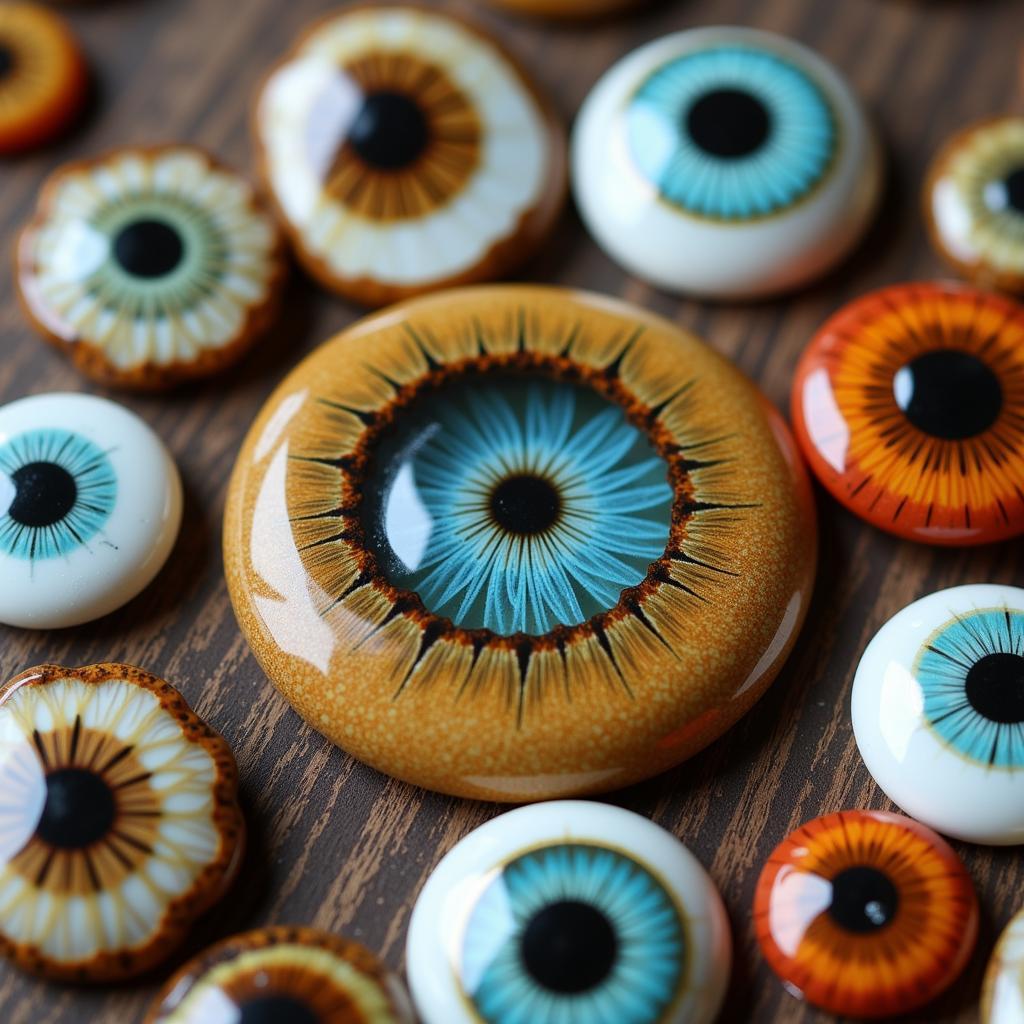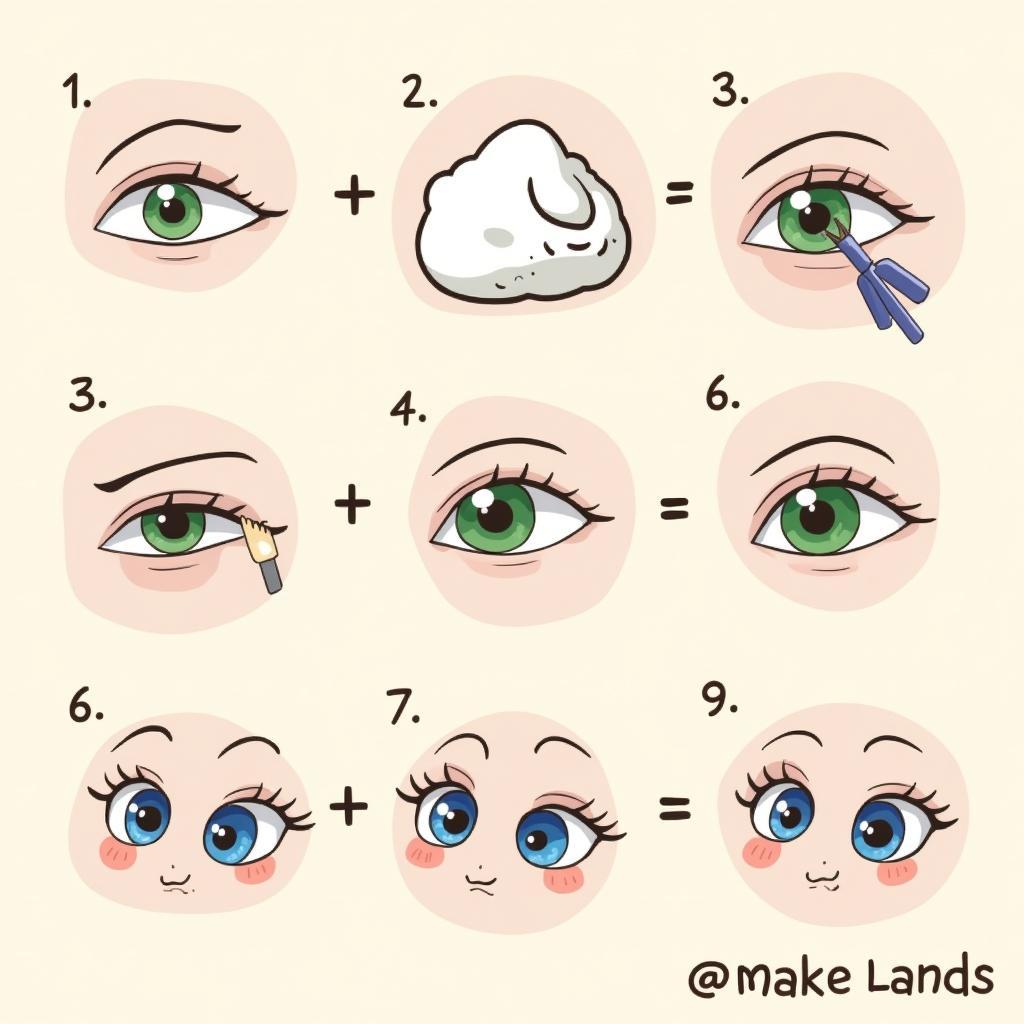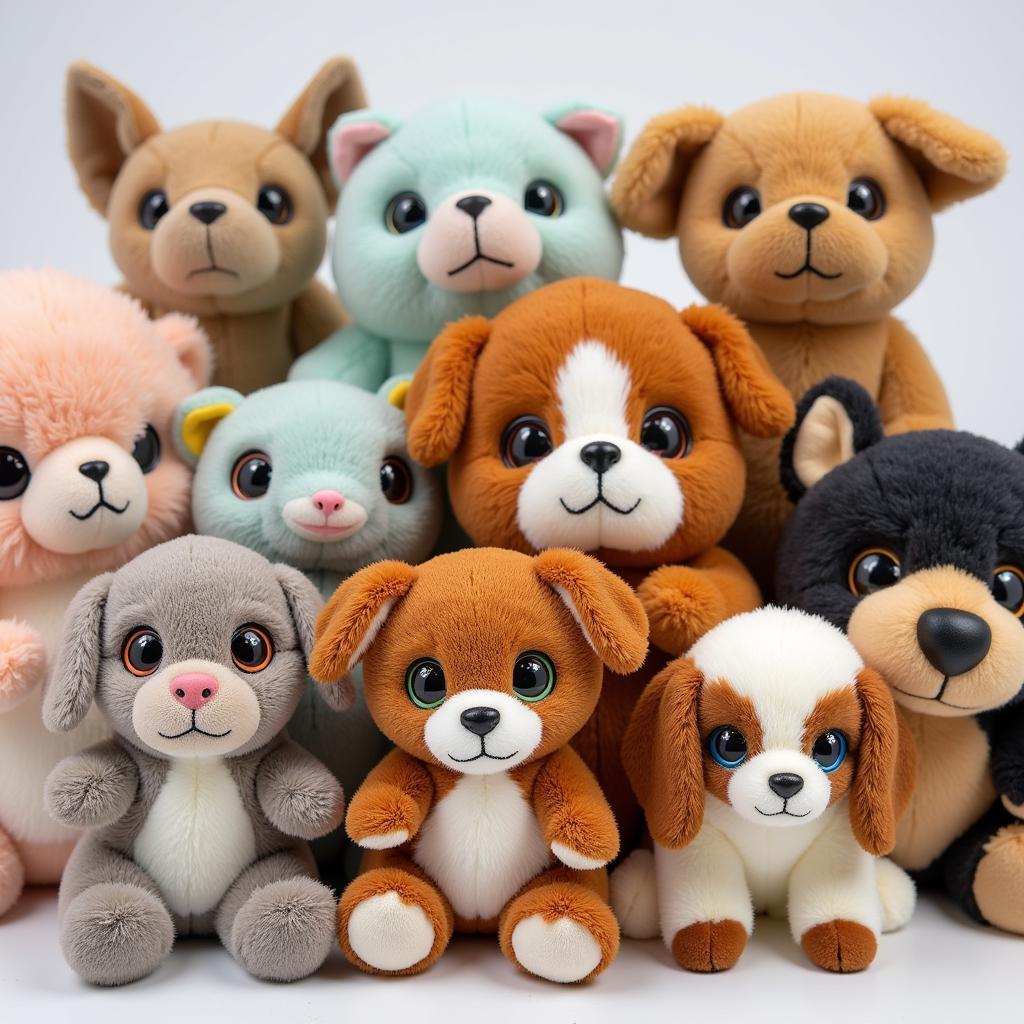Crafting animal eyes can be a rewarding challenge for any artist or hobbyist. Whether you’re working with clay, resin, or other mediums, capturing the realism and expressiveness of animal eyes can elevate your creations to a new level. This guide will delve into the intricacies of crafting captivating animal eyes, providing tips and techniques to achieve stunning results.
 Glass animal eyes of various colors and sizes
Glass animal eyes of various colors and sizes
Understanding Animal Eye Anatomy
Before diving into the crafting process, it’s crucial to understand the basic anatomy of animal eyes. While the specific structure may vary depending on the species, most animal eyes share common components, including the pupil, iris, sclera, and cornea.
- Pupil: The black, circular opening in the center of the eye that controls the amount of light entering.
- Iris: The colored part surrounding the pupil, responsible for controlling the pupil’s size.
- Sclera: The white outer layer of the eyeball, providing protection and structure.
- Cornea: The transparent outer layer covering the iris and pupil, helping to focus light.
Choosing the Right Materials
Selecting appropriate materials is crucial for creating realistic animal eyes. The choice depends on the desired look, durability, and skill level. Some popular options include:
- Glass: Offers excellent clarity and realism, available in various sizes, colors, and pupil shapes.
- Resin: Provides versatility and affordability, allowing for customization and unique effects.
- Polymer Clay: Suitable for beginners, offering malleability and a wide range of colors.
Essential Tools and Techniques
Having the right tools and techniques at your disposal is key to achieving professional-looking animal eyes:
- Eye Tools: Specialized tools designed for shaping, detailing, and positioning eyes.
- Paints and Pigments: Acrylic paints, powders, and inks for adding color and depth to the iris.
- Brushes: Fine-tipped brushes for precise application of paint and details.
- Gloss or Varnish: Adds shine and protection to the finished eyes.
Step-by-Step Guide to Crafting Animal Eyes
 Sculpting animal eyes from polymer clay
Sculpting animal eyes from polymer clay
While the specific steps may vary depending on the chosen material, here’s a general guide:
- Shape the Sclera: Begin by shaping a small, slightly convex disc using your chosen material. This will form the white part of the eye.
- Create the Iris: Using paint, clay, or colored resin, create a circle on the sclera to represent the iris. Choose colors that match the desired animal.
- Add the Pupil: Carefully paint or shape a black circle in the center of the iris to create the pupil.
- Add Details and Highlights: Use fine brushes and paint to add details like texture, depth, and light reflections to the iris and pupil.
- Bake or Cure: Depending on the material, bake or cure the eyes according to the manufacturer’s instructions.
- Attach to Your Creation: Once cooled, carefully attach the eyes to your sculpture or craft project using glue or other suitable adhesive.
Tips for Realistic and Expressive Eyes
- Study Real Animal Eyes: Observe the shape, color variations, and reflections in the eyes of different animals.
- Experiment with Pupil Shapes: Different animals have differently shaped pupils, such as vertical slits in cats or horizontal ellipses in goats.
- Add Depth and Dimension: Use layering techniques with paint or resin to create depth and realism in the iris.
- Consider the Light Source: When adding highlights, consider the direction of light to create realistic reflections.
- Don’t Be Afraid to Experiment: Try different techniques and materials to find what works best for you.
 A variety of stuffed animals with different colored eyes
A variety of stuffed animals with different colored eyes
Conclusion
Crafting realistic and expressive animal eyes can transform your creations from ordinary to extraordinary. By understanding the anatomy, choosing the right materials, and mastering essential techniques, you can bring your animal creations to life with captivating eyes that capture their unique spirit. Remember to observe real animals, experiment with different approaches, and enjoy the creative journey.
For more inspiration and resources on crafting, be sure to check out our other articles, such as “grim reaper stuffed animal“.





